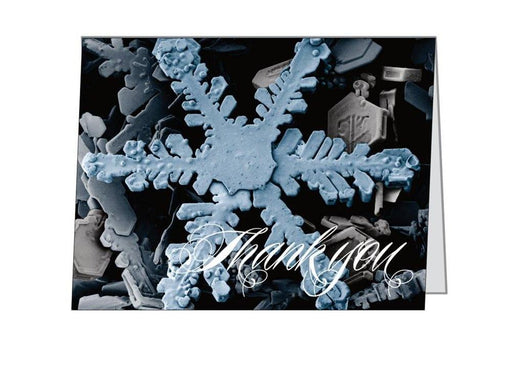
LabRatGifts.com
SEM Snowflake Thank You Card
SKU:
Say Thank you with one of a kind SEM Snowflake Thank you Cards!
Thank your teacher/professor, laboratory partner or anyone who deserves a snowflake thank you card. Beautiful Snowflake Thank you Card set is great for the winter, during the holidays or any time of year!
SEM Snowflake Photo Cards are a great way to say thank you to anyone. Say thank you in style and with science! High quality image produced through SEM (Scanning Electron Microscope) by scanning the surface with a focused beam of electrons. Learn more below.
Specifications
- Quantity: 10 cards per pack - 10 envelopes included
- Color(s): blue, black, white and gray. White inside w/light gray design lower portion. White envelopes. See images.
- SKU/Product Code: TYC013
- UPC/GTIN: 649558228957
- Size/Dimensions: 5.47" x 4.21"
- Weight: 3.5 oz.

Copyright © LabRatGifts, LLC
Other SEM Snowflake options;
Learn more about SEM
A scanning electron microscope (SEM) is a type of electron microscope that produces images of a sample by scanning the surface with a focused beam of electrons. The electrons interact with atoms in the sample, producing various signals that contain information about the surface topography and composition of the sample. The electron beam is scanned in a raster scan pattern, and the position of the beam is combined with the intensity of the detected signal to produce an image. In the most common SEM mode, secondary electrons emitted by atoms excited by the electron beam are detected using a secondary electron detector (Everhart-Thornley detector). The number of secondary electrons that can be detected, and thus the signal intensity, depends, among other things, on specimen topography. SEM can achieve resolution better than 1 nanometer.
Specimens are observed in high vacuum in conventional SEM, or in low vacuum or wet conditions in variable pressure or environmental SEM, and at a wide range of cryogenic or elevated temperatures with specialized instruments.
Share this Product




